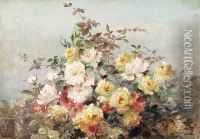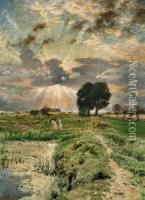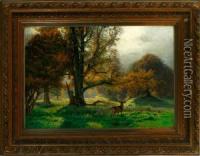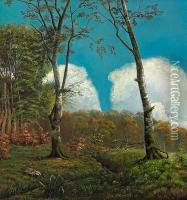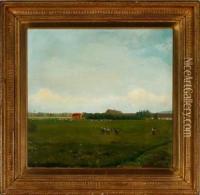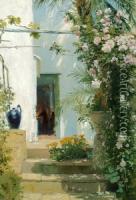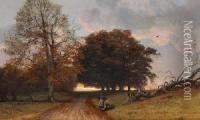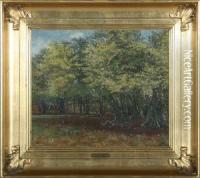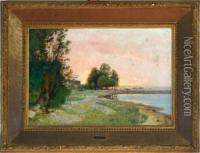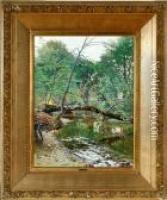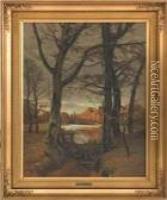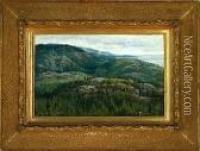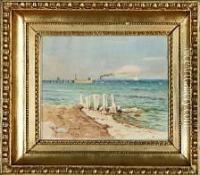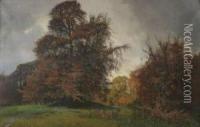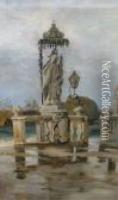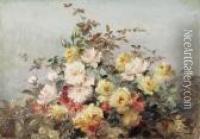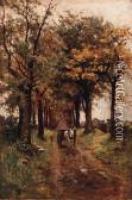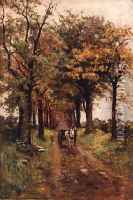Thorvald Simeon Niss Paintings
Thorvald Simeon Niss was a Danish landscape painter who played a significant role in the art scene of his time. Born on May 7, 1842, in Assens, Denmark, he was a part of the late 19th-century wave of Scandinavian artists who focused on the beauty of their natural surroundings.
Niss began his artistic journey at the Royal Danish Academy of Fine Arts in Copenhagen where he studied from 1858 to 1863. It was during this time that he was greatly influenced by his peers and instructors, including P.C. Skovgaard, one of the leading figures of the Danish national romantic movement. Niss's early work exhibited the influence of this school of thought, which emphasized a romantic view of nature.
However, Niss eventually developed his own artistic style, which was characterized by a more realistic representation of the Scandinavian landscape, with particular attention to the effects of light and atmosphere. His landscapes often depicted the Danish countryside and were marked by a subdued color palette and delicate interplay of light and shadow.
Niss's career spanned several decades during which he exhibited regularly at Charlottenborg Spring Exhibition and became a respected member of the art community. He was also a recipient of several grants and scholarships that allowed him to travel and study abroad. These travels included trips to Switzerland and Italy, where he found new sources of inspiration that influenced his technique and subject matter.
Despite his success, Thorvald Simeon Niss faced personal challenges, including the death of his first wife and difficulties in his second marriage. His later years were marked by a decline in popularity as the art world's tastes shifted towards more modernist styles, and he struggled financially as a result.
Niss continued to paint until his death on January 11, 1905. His oeuvre remains a testament to the Danish landscape painting tradition of the 19th century and his works are held in high regard in Danish art history. They can be seen in various museums and collections in Denmark and beyond, preserving his legacy as a significant figure in Scandinavian art.
